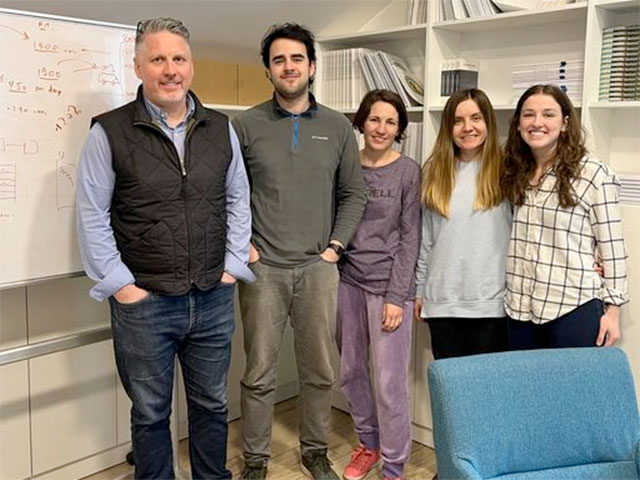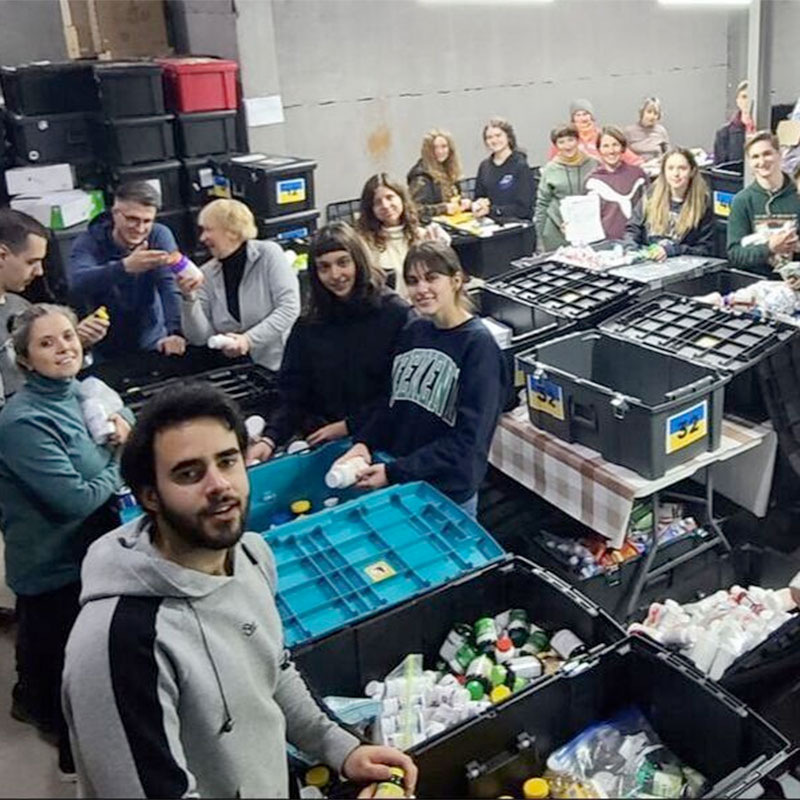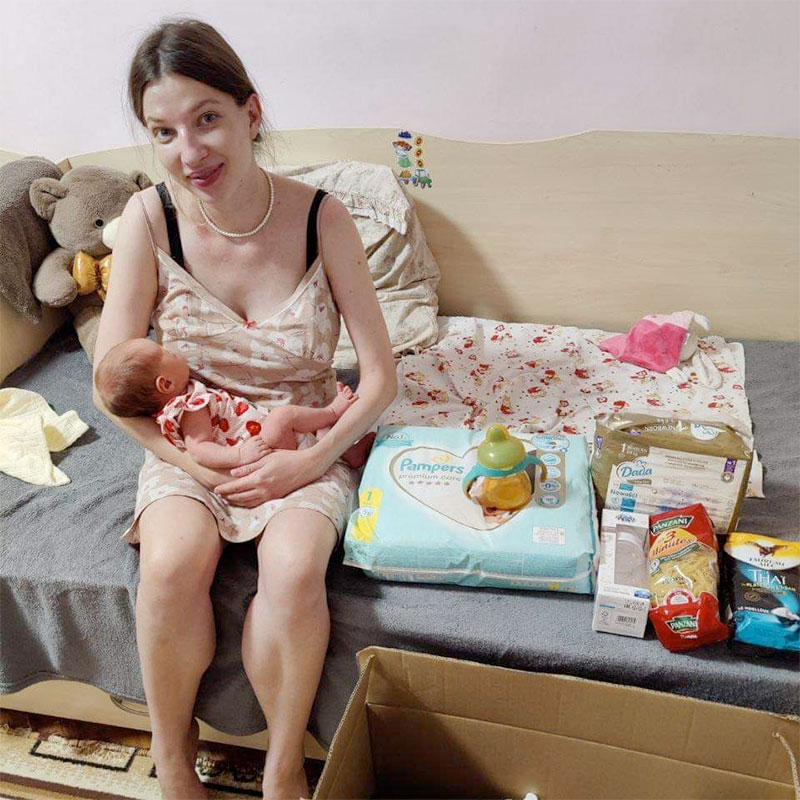How Crates for Ukraine May Become Seeds for Church Planting
By Jamie Dean, OPC Communications Coordinator
Not long after Russia invaded Ukraine last year, an American missionary living in the former Soviet state found himself consulting a crisis manual published in the Dominican Republic.
It wasn’t what MTW missionary Doug Shepherd expected to be doing last spring, but the sudden war left missionaries and Ukrainian pastors scrambling for the best way to respond to circumstances they’d never faced before. (Mission to the World—MTW—is the missions agency of the Presbyterian Church in America.)
Shepherd skipped the manual’s chapter on how to form a police force, but he found another section particularly helpful: how to form a crisis team.
What he learned helped the MTW team devise plans for assisting refugees fleeing their homes and organizing tangible aid for those staying behind. That effort eventually led to the project called Crates for Ukraine—an opportunity for PCA, OPC, and other congregations in the United States to pack sturdy boxes (or “crates”) of much-needed supplies for shipment to the MTW team in Ukraine.
This year’s winter edition of Crates for Ukraine brought in more than 1,300 crates full of medical, hygienic, and other basic supplies that are difficult to obtain or purchase in Ukraine.
The OPC contributed 307 of those crates, coming from 72 churches in 16 presbyteries across 24 states. Shepherd expressed his gratitude, saying the OPC was “punching way above its weight class.”
Shepherd serves in the western Ukrainian city of L’viv, alongside OPC missionary Heero Hacquebord, at Holy Trinity Reformed Church of L’viv, a congregation the team began planting nearly 16 years ago. (Hacquebord labors as an OPC missionary serving with MTW’s team in Ukraine.) But the pair has known each other for decades.
Both men moved to Ukraine in the years after the collapse of the Soviet Union to serve with an MTW team evangelizing and planting churches that eventually grew into a denomination called the Evangelical Presbyterian Church of Ukraine. Some of the Ukrainian men the team first evangelized and discipled are now seasoned pastors serving among the 12 churches in the denomination.
After the war began, church members and others from regions in eastern Ukraine began flowing into L’viv, with plans to shelter in the relatively safe city or to evacuate to Poland or countries beyond.
As the MTW team evacuated many women and children to Poland (most Ukrainian men ages 18 to 60 are required to stay in Ukraine), they also started bringing back supplies.
Shepherd said they began receiving lists from churches, clinics, and others with requests for help: “And we distilled it down to the things that were most needed. And then we distilled it into what you could get in North America that you couldn’t get in Europe or that was really expensive…and that became Crates for Ukraine.”
The need has continued, and the project continues to require donors to use a very specific list of items to pack in the crates. Shepherd says that just a few weeks ago the team reconfirmed that the items on the packing lists are still cheaper in the U.S., can only be found in the U.S., or can only be bought in bulk in the U.S.
Shepherd described the project’s beginnings during a visit by a small contingent from the OPC last month, including David Nakhla, administrator for the Committee on Diaconal Ministries (CDM); John Voss, an OPC deacon and CDM member; and me.
Jon Eide, MTW’s Eastern Europe director, and a decades-long member of the Ukraine team, graciously led our small group on a first-hand exploration spanning several churches and several hundred miles.
On the first full morning of our journey, Doug Shepherd discussed Crates for Ukraine over breakfast—not long after a pleasant voice came over a hotel intercom informing guests that an air raid siren was sounding and urged them to move to the bomb shelter in the basement. Most people in the restaurant barely looked up from their eggs.
In L’viv, most of the alerts don’t materialize into an attack, but the sirens are a vivid reminder that just beyond the seeming normalcy of everyday life, a war is still raging. (On March 9, missiles did make landfall nearby, killing five people in a village some 50 kilometers outside of L’viv during a Russian attack that hit sites across the country.)
Those remaining in Ukraine seem determined to press on: going to school and work, sitting in coffee shops and restaurants, pushing their children on swing sets in playgrounds. Life for the church in L’viv continues as well, with Sunday worship, Bible studies, and fellowship dinners.
But it also includes the crisis team working to get supplies to people who need them most.
On a rainy afternoon, we met members of the crisis team in a warehouse across the street from the L’viv church. After a long journey that often starts in fellowship halls in the U.S., crates for Ukraine end up here. During our March visit, most of the recent crates had been processed and sent out on the Friday before. But a few crates remained, including boxes filled with first aid kids for those living in some of the most dangerous areas of the country.
Ruslan, a young man from the church who helps lead the team, says requests often come from churches and friends in affected regions, asking for assistance. The aid falls into three main categories: urgent wound care, general medicine, and essential items like sleeping bags, socks, thermal underwear, and personal hygiene products.
(After a team or volunteer delivers the diaconal aid, they must send a photo of the crates at the final point of delivery.)
Each crate includes the L’viv church’s name, address, and website, along with the web address for their Reformed publishing house, with many resources available online for free, including Bible study materials. It also includes a sticker with Isaiah 41:10: “Fear not, for I am with you…”
Though the crisis team can’t meet every person who benefits from items in all the crates, Doug Shepherd says the church’s contact information serves as breadcrumbs for those who might want to find them later.
It might also serve as seeds.
Even during a war, Hacquebord is thinking about church planting, and says he’s hopeful the crates project will provide many contacts for people in other parts of the country and lay groundwork for potential church plants. Ruslan, the leader of the crisis team, says he often hears from people who have benefited from aid and want to say thanks, including many who need to hear the gospel.
Hacquebord hopes those ongoing interactions will one day bear long-term fruit: “It’s been wonderful to see the Lord using it [diaconal aid] to soften up people’s hearts, to soften the soil, preparing the soil. We hope for church planting across the country in part because people are getting to know us, to know our congregation, and through us the Reformed faith and our denomination.”
YouTube hits for Sunday worship are already on the rise, going from a few dozen before the war to hundreds of viewers on some Sundays.
Ruslan says he’s amazed at the gospel conversations he’s been able to cultivate with people he would have never expected. “It’s incredible to see how God uses such an evil thing as war to build his church, to prepare soil for his seeds,” he said. “And it’s not the end yet—He’ll work more.”
Want to learn more about New Hope Church? Click here.



